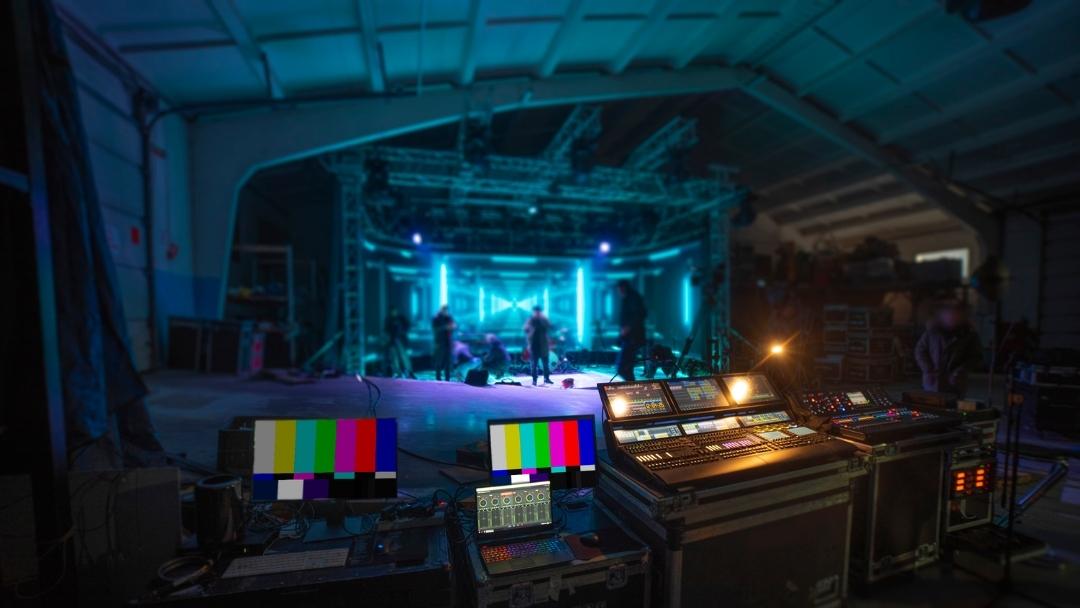What does virtual event production consist of and why do you need it? The alternative to face-to-face events and seminars are virtual events: webinars, virtual fairs, etc. We at expertshare provide you with a complete guide so you can produce and run your events like a pro and your business continues to sail through the web towards growth. Start creating virtual events right now!
For the past 2 years, it has not really been possible to enjoy a lot of live, face-to-face networking, with the spontaneous exchange of ideas. However, it is still possible to keep your business running smoothly, maintain contact with your customers and why not, maybe even get new leads and potential customers despite the COVID-19 crisis
The value of face-to-face interaction will never go away, but there are times when going virtual is a necessary part of your event program. So, in the face of the social distancing caused by the Coronavirus pandemic, virtual event production, such as Webinars, virtual trade shows, etc., could be the ideal alternative to get your business thriving.
Why organizing a virtual event is a chance to grow your business

Organizing a virtual event is a great opportunity to expand the geographic reach of your business marketing. Moreover, you can connect with your customers and also attract new prospects that might be interested in what you offer, among other things
Organizing a virtual event requires the same care and attention to details as a face-to-face or in-person event. With both events, you must do everything to effectively promote the event, engage your attendees, create memorable moments for participants and demonstrate the success of the event.
By thinking of virtual events not as small, one-off presentations, but as value-added, engagement-driven experiences, you can create an event that has an impact on people and extends beyond just a computer screen. So what is holding you back from creating your own virtual events?
We want to contribute to the digital and innovative growth of your business, so, we present you with this practical guide to get you started with your virtual event production. Let’s start with the basics:
What is a virtual event?
Chances are you’ve attended an online webinar, watched an on-demand workout class, joined a meeting using a video conferencing tool, or even attended a conference from the comfort of your home or desk. These are all examples of virtual events. A virtual event is one where people experience the event and its content online rather than meeting in person.
Main types of virtual events
Virtual events are not a replacement for in-person events, but a new type that you can use to enhance your entire program. Here are the 4 main types of virtual events:
1. Virtual conferences
Like face-to-face conferences, virtual conferences contain keynotes, breakout sessions and more. Virtual conferences include multi-session content as well as community engagement tools. While not as effective in terms of participant recruitment and networking as a face-to-face event, virtual conferences allow attendees to view keynotes in real time, build their own agenda from relevant content, and interact with other attendees.
2. Webinars
Webinars usually have a length between 45 to 90 minutes and they allow attendees from around the world to join in and listen as one or more speakers present the content virtually. Companies can charge attendees to join webinars using paid online services or they can be offered for free. Webinars generally use video conferencing tools that allow for Q&A and the ability to present live or pre-recorded video and are offered on-demand, after completion.
3. Internal hybrid events
These are councils or town halls, sales kick-offs, company-wide events, trainings, department meetings and more. For organizations that span countries, even continents, internal hybrid events are used to share a message with the entire company when employees are not all gathered in the same place. While it would be great to fly every employee to your organization’s headquarters, it would be incredibly expensive, and the necessary scheduling would be time-consuming.
4. External hybrid events
These events are held for those outside the organization. They can be user conferences or industry conferences. They require higher levels of video production so that virtual attendees receive a quality similar to that of in-person attendees. These events allow attendees who are unable to travel to the event to participate and learn. Interested in exploring more about hybrid events? Learn also the best pratices to implement for hybrid meeting.
Why organize a virtual event?
Virtual events are held for the same reasons as in-person events: to deliver your company’s message to drive leads and revenue, drive adoption and generate lifetime loyalty. For years, meeting and event planners have been choosing between in-person, virtual and hybrid events and have come to the conclusion that each type of event has its own pros and cons.
Here are some reasons to host a virtual event:
- Accessibility: Unlike in-person events, virtual options allow you to adapt a space for participants who cannot attend in person.
- Budget: If your organization needs to cut costs and hold smaller events, webinars can help you save money, which you can then invest in a larger annual event that attracts a large number of potential customers. It also helps to have a virtual or hybrid option when attendees’ travel budgets are a concern.
- No other option: Whether due to extreme weather, travel bans or an act of God, you’re forced to make your in-person event a virtual one or cancel it altogether.
The basics of event planning
Event planning boils down to the fundamentals, they must be done with marketing, content promotion and customer engagement in mind. In a nutshell, these are the basics and the fundamental principles:
- Virtual events, like in-person events, need good marketing. Without targeted and effective promotion, attendance suffers.
- Content is king. In a virtual environment, your content is your event. Powerful keynotes and engaging sessions tailored to your attendees are critical.
- Solo doesn’t have to mean lonely. Keep virtual attendees engaged. Offer options that are relevant to each type of attendee and use online event guides for virtual events.
- Data is the only way to demonstrate event success. Measuring engagement and capturing attendee data is the only way to demonstrate event ROI (Return on Investment) and activate the buyer’s journey.
Virtual event elements
A virtual event is built on content, attendee engagement and data. While it is true that virtual events do not require food and beverage (F&B), they are made up of many of the same elements as any other type of event. Video production quality and connectivity will be important, as will the site that hosts the agenda and content.
These are the elements that make up a virtual event:
- Event website
- Event registration
- Live presentation content
- Live audio / one-way video (Live Streaming)
- Questions and answers (Q&A)
- Live attendee surveys
- Note taking / favorite slides
- Recorded content
- Interactive video conferences
- Feedback surveys
Virtual event technology platforms
Virtual events rely on technology. Attendance would not be possible without the use of computers and mobile devices. But virtual event technology requires more than just video conferencing tools. Just like a face-to-face event, virtual events benefit from the use of an entire event technology platform that helps you promote, execute and manage your event.
Here are the most important pieces of event technology to use when preparing for the virtual event production.
Event website: Your event website is used for promotion. It serves the same purpose regardless of whether the event is virtual or in-person. Your event website is your key promotional tool to interest potential attendees and entice them to register for the event. Your event website should communicate the value of the virtual event, contain the schedule, showcase speakers, include frequently asked questions and answers, and point potential attendees to registration
Registration: Registration is your first data collection tool and is critical to your event. Registration tools allow attendees to register for virtual events, submit preferences and personal information, and provide payments, if necessary. A robust online registration tool allows attendees to easily register and provides organizers and vendors with the information needed to plan a great event and demonstrate its success.
Email: Email marketing can drive demand and increase registrations, keep attendees informed prior to the event and be used to engage attendees prior to your virtual event through feedback surveys. Email is the best way to communicate with attendees at all stages of the event.
Online event guide and mobile event app: One of the most important pieces of virtual event technology, are the online event guide and mobile event app as they are the base of operations for attendees during the virtual event production.
These tools work on mobile devices and web browsers and are the main information hub for attendees. Agendas with links to sessions put content at attendees’ fingertips. This is where attendees choose which sessions to add to their agenda and where planners collect data on session popularity and attendee participation. These tools also connect attendees and provide messaging tools that allow attendees to network and foster connections virtually.
Event Feedback: Event feedback is crucial for virtual events when organizers do not have the ability to gauge reactions from attendees’ verbal expressions or comments on-site. Use event feedback tools to collect feedback through post-event surveys that can be used to demonstrate the success of the event. In addition, event feedback can be used as a tool to qualify virtual leads and drive them to sales.
Integrations: Integrations ensure that vital registration and attendee data is shared between your event technology system and your virtual event platform. It also allows this data to be shared with your marketing automation and CRM systems. Use integration tools to keep your attendee data in one place so you can reach prospects faster and analyze key event insights, such as session attendance and engagement.
These are the key factors for the virtual event production that will make your virtual event a success

Virtual event strategy: Lay out the objectives and strategy for the virtual event and make sure the entire organization is aligned with them. It is necessary to consider how to engage the audience, lead generation, benefits to be obtained, brand image, etc. You must take these considerations into account in the design of the content, the budget, the technology to be used, the sponsorship, etc.
Audience definition: Look at your database and study which segments would be interested in your company’s approaches. This is a great opportunity to consider new audiences from sectors, industries or professions that your company has not yet addressed.
Address guide: provide attendees with a guide on how to attend the event virtually.
Links: In the agenda, add links to the recording of the session or live broadcast.
An attractive web or landing page is essential. One of the keys to convince attendees is to create an attractive web page or landing page.
Look for partners to promote the event
Partners, speakers and other event ambassadors can help distribute the message. Generate easy and customizable content so that ambassadors can promote the event on social media and other media.
Give a preview of the content
Giving a preview of the content is a good thing. Posting on social media and other media such as short videos that encourage participation and advance content will increase the number of registrations.
Deliver proof of your virtual event success
Virtual event success depends on aligning event and business objectives, identifying key performance indicators to define event success before the event, and analyzing event data and reviewing insights after the event. Testing the event’s Return on Investment (ROI) requires a cost-benefit analysis. Costs are expressed as direct costs, indirect expenses and opportunity costs. Benefits refer to direct revenue, attributed revenue, attributed sales pipeline, brand equity and knowledge sharing.
By using data collected during virtual events to weigh costs and benefits, you can demonstrate the success of your event. Articulate your event success metrics before your event begins. After the event, take the time to understand if the virtual event production was successful based on your metrics and analyze how to improve it in the future.
Now you have the basics to start organizing your virtual events and make your business achieve the long-awaited success, using technological tools. Dare and push the limits!
If you want to learn about other topics that will help you position your company in the digital era, as well as receive the best financing options that fit you and technical and commercial support to be able to face any crisis, get in touch with expertshare, the virtual event production experts.






